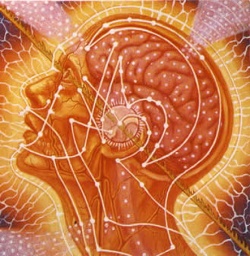Difference between revisions of "Bhavaṇga"
| Line 1: | Line 1: | ||
[[File:33-800wi.jpg|thumb|250px|]] | [[File:33-800wi.jpg|thumb|250px|]] | ||
| − | '[[bhavaṇga]]' (Pāli). Concept evolved primarily in [[Pāli]] [[Abhidharma]] commentarial literature in order to explain the continuity of [[consciousness]] and personal {{Wiki|identity}} in the absence of a permanent [[self]] (the latter being denied by the [[anātman]] doctrine). The [[bhavaṇga]] is the individual's ‘[[life continuum]]’ which flows on like a [[stream]] ([[sota]]) from one [[existence]] to the next. | + | '[[bhavaṇga]]' ([[Pāli]]). {{Wiki|Concept}} evolved primarily in [[Pāli]] [[Abhidharma]] {{Wiki|commentarial}} {{Wiki|literature}} in order to explain the continuity of [[consciousness]] and personal {{Wiki|identity}} in the absence of a [[permanent]] [[self]] (the latter being denied by the [[anātman]] [[doctrine]]). The [[bhavaṇga]] is the individual's ‘[[life continuum]]’ which flows on like a [[stream]] ([[sota]]) from one [[existence]] to the next. |
| − | Sometimes known as the [[bhavaṇga-citta]], or ‘[[consciousness continuum]]’, it is the foundation of all [[experience]], both {{Wiki|conscious}} and {{Wiki|unconscious}}. It retains the traces of all [[impression]] and [[sensations]], and makes it possible to have recollections of these in the form of {{Wiki|memories}}. At the beginning and end of each individual [[existence]] it is known as ‘[[rebirth-linking consciousness]]’ ([[paṭisandhi]]) and ‘[[death consciousness]]’ ([[cuti-citta]]) respectively. The concept of the [[bhavaṇga]] paved the way for later {{Wiki|idealist}} trends and the evolution of the notion of the [[ālaya-vijñāna]] or ‘[[storehouse consciousness]]’. | + | Sometimes known as the [[bhavaṇga-citta]], or ‘[[consciousness continuum]]’, it is the foundation of all [[experience]], both {{Wiki|conscious}} and {{Wiki|unconscious}}. It retains the traces of all [[impression]] and [[sensations]], and makes it possible to have [[recollections]] of these in the [[form]] of {{Wiki|memories}}. At the beginning and end of each {{Wiki|individual}} [[existence]] it is known as ‘[[rebirth-linking consciousness]]’ ([[paṭisandhi]]) and ‘[[death consciousness]]’ ([[cuti-citta]]) respectively. The {{Wiki|concept}} of the [[bhavaṇga]] paved the way for later {{Wiki|idealist}} trends and the [[evolution]] of the notion of the [[ālaya-vijñāna]] or ‘[[storehouse consciousness]]’. |
{{R}} | {{R}} | ||
[http://www.answers.com/topic/bhava-ga www.answers.com] | [http://www.answers.com/topic/bhava-ga www.answers.com] | ||
[[Category:Luminous mind]] | [[Category:Luminous mind]] | ||
{{PaliTerminology}} | {{PaliTerminology}} | ||
Latest revision as of 04:05, 29 August 2014
'bhavaṇga' (Pāli). Concept evolved primarily in Pāli Abhidharma commentarial literature in order to explain the continuity of consciousness and personal identity in the absence of a permanent self (the latter being denied by the anātman doctrine). The bhavaṇga is the individual's ‘life continuum’ which flows on like a stream (sota) from one existence to the next.
Sometimes known as the bhavaṇga-citta, or ‘consciousness continuum’, it is the foundation of all experience, both conscious and unconscious. It retains the traces of all impression and sensations, and makes it possible to have recollections of these in the form of memories. At the beginning and end of each individual existence it is known as ‘rebirth-linking consciousness’ (paṭisandhi) and ‘death consciousness’ (cuti-citta) respectively. The concept of the bhavaṇga paved the way for later idealist trends and the evolution of the notion of the ālaya-vijñāna or ‘storehouse consciousness’.
